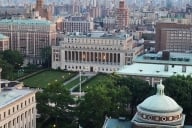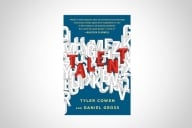You have /5 articles left.
Sign up for a free account or log in.
When I worked for Britannica.com during the first dot-com bubble of the 1990s, I spent a lot of time in San Francisco. Britannica had offices South of Market (SoMa) and later at the Presidio.
While my Britannica adventure didn’t work out quite as I’d hoped, that time spent in San Francisco left me with a deep affection for the city. Because of that connection with San Francisco, I’ve been following the stories about the city’s recent problems. And in thinking about how San Francisco is struggling, I’ve been wondering if there are any lessons that colleges and universities can learn from the city’s woes.
San Francisco seems to be facing three big challenges coming out of the pandemic. The first is the disappearance of office workers, as tech, finance and creative professionals have shifted to hybrid and remote work schedules.
With office workers scarce, downtown San Francisco has seen the closure of numerous retail stores, restaurants and hotels (Challenge No. 2). The closing of these businesses is also related to quality-of-life concerns, with the perception that downtown has become a home for “rampant homelessness, a drug crisis, [and] surging crime” (Challenge No. 3).
These three challenges are layered on San Francisco’s long-running affordable housing crisis, where the average home cost (while declining over 13 percent in the past year) is still north of $1.2 million.
Universities are not cities, so caution is in order when drawing parallels. Still, adjacent thinking is good fun—and sometimes insights emerge.
First, it seems clear that even universities with aggressive online education portfolios and progressive hybrid/remote working options should do everything possible to avoid their physical campuses becoming ghost towns. Universities, like cities, depend on a density of interactions to prosper.
San Francisco must create reasons for people to spend time downtown. This may require that the city convert office buildings to apartments, which is no easy task.
I’ve often wondered why universities are slow to create on-campus housing for faculty, staff and alums. We don’t live on campus with (at least some) of our students because most universities are already short of residence hall space. Creating housing for nonstudents may seem nuts when we can’t meet student demand.
Still, student and faculty/staff/alum housing might not be an either-or. Perhaps nonstudent demand for campus housing could provide the funding and impetus to build mixed-age/-role campus residences.
Campus housing for faculty, staff and alums need not be big or fancy. Enough folks might be happy with microapartments to make the project worthwhile.
Here I’m not suggesting that the offices of hybrid academic staff be turned into apartments. But the idea is at least worth playing with.
If universities want to maintain campus population densities, avoiding the empty streets and storefronts that San Francisco is grappling with, then those universities may need to get into the local affordable housing game. San Francisco would be in better shape today if zoning laws encouraged the building of dense, affordable housing.
Universities benefit from affordable workforce housing that is close enough to campus that people can walk to their academic jobs.
As San Francisco is learning, urban density must be designed for rather than assumed. Market forces can cause people to want to work and live in a city, and market forces can push them away. Universities should not assume that doing what they did pre-pandemic will result in the campus cultures they want post-pandemic.
Universities may not be cities, but what is going on in San Francisco now could be read as a cautionary tale for higher education.



